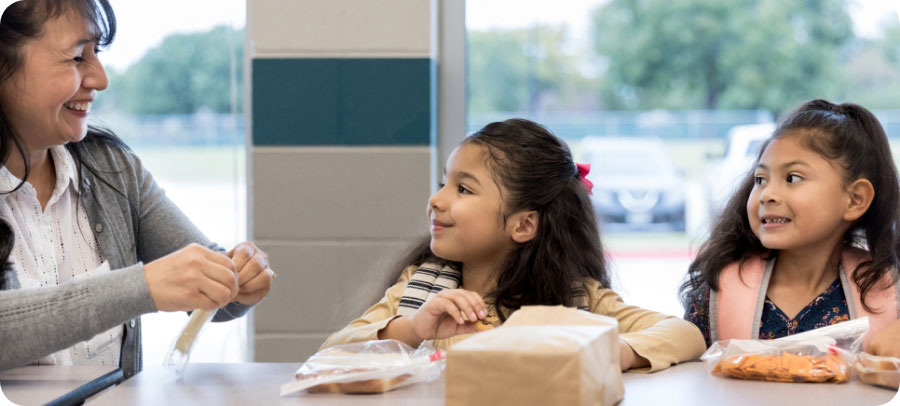Inclusivity
Jared shares insights gained from years of working with elders about the judgments and prejudices surrounding food choices. He emphasizes the beauty and diversity of global cuisines, and stresses the importance of being respectful and open-minded about what others eat.
Video: Jared Qwustenuxun Williams, Indigenous Cultural Educator.
Students have diverse experiences that impact their nutritional status, food acceptance and food behaviours; they should therefore never be pressured to eat or to finish their food. Establishing trusting relationships with students is more important than the food being offered, consumed, or wasted.
School food programs offer a consistent opportunity for adults in school settings to interact positively with children and youth, respond to their needs, build trust, and offer care and connection. School food programs can also provide routine, structure, and opportunity for repeated positive experiences around food. Over time, this will help students develop eating competence. Unfortunately, many students have experienced trauma around food. This can stem from physical factors (such as swallowing difficulties or medical conditions), developmental challenges (i.e., such as sensory processing), or adverse childhood experiences. Some examples include:
- food insecurity
- having a caregiver restrict or control food intake
- body shaming
- change or loss of food culture
- manipulation, punishment and rewarding with food
- experiencing shame, bias or stigma when accessing food assistance
Compassion-informed school food programs emphasize the need for students’ safety, choice, and control over their food experiences to prevent trauma and re-traumatization. Re-traumatization occurs when a student is put in a situation that reminds them of an earlier experience of powerlessness and loss of control.
What does a compassion-informed school food program look like?
- Students eat without feeling shame, pressure, or fear (e.g., staff are not coaxing or making comments about food intake).
- Students can make their own choices on whether, and how much, they eat.
- Students are valued no matter their mealtime challenges.
- Students’ genders, cultures and histories are respected. Staff take the time to become aware of their implicit biases (attitudes or stereotypes held without conscious knowledge) and microaggressions that may make students feel unwelcome.
- A diversity of students participate in the program.
- Mealtime routines and structures are predictable. Students know where to go to get food when they need it.
What is microagression? A microaggression is a subtle interaction or behaviour that communicates a bias towards a historically marginalized group. It can be intentional or unintentional, but does cause harm and may not feel “micro.” In a school food program, a microaggression could look like:
- Failing to learn to pronounce, or continuing to mispronounce, the names of students after they have corrected you.
- Assuming that a non-white person is from a different country or cannot speak English.
- Disregarding religious or cultural traditions or their details (such as dietary practices).
- Continuing to misuse pronouns after a student has indicated their preferred gender pronoun.
- Asking a student, “what are you eating?”, with a tone or facial expression that implies “that looks gross/strange.
- "You don’t look Indigenous” or “How Indigenous are you?”, questioning how someone identifies.
